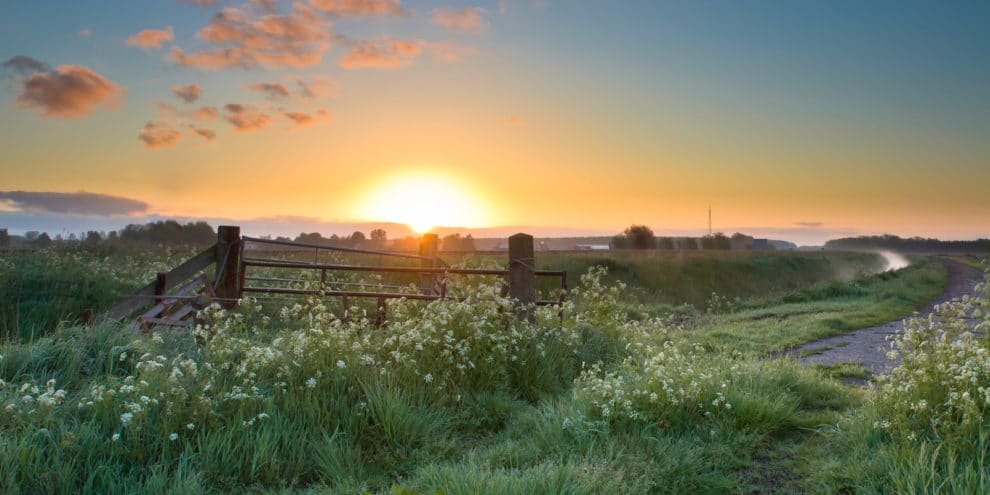Strategies for Buying Rural Land
by James Wesley Rawles, Survival Blog:

Over the years, I’ve heard from many of my readers who yearn to live in the hinterboonies. But they often say that they feel “stuck”, living where they are. One of the biggest impediments seems to be the cost of land, in their desired locale. Let’s face it: If you buy land in an area with a fairly mild climate, plentiful water, and fertile top soil, then odds are that it will have a fairly high “per acre” price. There is plenty of affordable desert scrub land on the market, for as little at $1,000 per acre. But good land now ranges from $5,000 to $25,000 per acre. (And even more, for particularly desirable “view” parcels, or for small lots, with utilities.)
This might seem daunting, but fear not. In my 20+ years of consulting, I’ve learned some key strategies for finding quality rural land at a reasonable price. But note that most of these take plenty of research, patience, and persistence. Here they are:
1.) Search for tax delinquencies. Back in the old days, this necessitated making a trip to the Assessor’s Office, at your county courthouse. But many of those public records are now available online. The ideal property to look for is a property with an out-of-state owner but that has not been listed for sale for more than three years. Getting a call from a would-be-buyer just a few days after receiving a tax delinquency notice is perfect timing.
2.) Watch for foreclosures. I noticed that in April, 2020, the folks at Lifewire published a fairly comprehensive list of foreclosure search/watch web sites: The Best Free Foreclosure Search Sites. This well-researched set of links is broke down into categories, such as: A.) Bank REOs, Government-Owned, and General Foreclosure, B.) REO, and Distressed Property Listings, and C.) Real Estate Agents, Brokers, and Property Services.
3.) Make a friend of a banker. Perhaps the best small investment you’ll ever make is buying a lunch or two, for a local banker. Do some phoning around and find out which bank in your area carries the most rural mortgages, and then ask who handles the foreclosures. This is the guy (or gal) that you want to take out to lunch and a chat. (If that individual is of the opposite sex, then make sure that your spouse joins you, for the luncheon appointment.) There is a huge advantage in getting to know each other, and letting that banker know that you are both earnest and qualified, and the type of property that you are looking for.
4. ) Watch for auctions. You will of course need to do your due diligence, but sometimes properties sell at auction far below the prevailing market price. Needless to say, never buy a piece of land sight unseen.
5.) Consider buying “tear-downs”. A lot of rural properties get overlooked by other buyers because they have standing houses on them that are substandard or totally dilapidated. But you need to just step back, squint, and ask: “Now what would this look like, without that collapsed single-wide there?” Often, such properties sell for less than nearby ‘bare land’ parcels, of similar size. Yet, consider that in many cases these properties already have an established power line, a phone line, an established spring or well, water lines, fencing (or at least surveyed property lines), some usable outbuildings, roads, cleared fields, fruit and nut trees, developed garden topsoil, and a septic system — and most or all of those can be re-used. (Hence saving you many thousands of dollars in property development costs.) Just be sure to factor in your eventual costs of demolishing and hauling away the material any unsalvageable dilapidated structures.
6.) Consider buying larger properties with standing timber. If you can “swing” a loan for a large property that has timber, then in most western states you can selectively log it almost immediately after you take possession. (But beware of purchase contract and loans stipulations! Many lenders require that timber sale proceeds go to the lender first.)
7.) Consider splitting a property with a friend or relative. If you find a property in an area where it is permissible to subdivide, then you might be able to immediately split it.
8.) Use your VA loan benefits. If you are a U.S. military veteran, check the current Veteran’s Administration (VA) benefits. You may be pleasantly surprised. Just keep in mind that the VA has some restrictions about lending on rural parcels, but they are usually not insurmountable hurdles.
9.) Look for off-grid properties. Generally, properties
10.) Watch for obituaries and divorce filing notices. Face it, folks: These are the times when properties most often change hands. Getting “early” intel might allow you to make an offer on a property before it formally hits the market.
11.) Borrow money from within your own family. Don’t be shy about asking an older relative to make a secured loan. If their CDs and T-Bills are paying the 2 or 3 percent and you offer them a 4 percent annual return, then they might say yes. But you’ll never know unless you get up the nerve to ask them.
12.) Turn every stone. Make your searches for both your land and finances very thorough.
13.) Clean house! Many folks mistakenly believe that they don’t have the money for a down payment on a large rural parcel when they really do. They simply have too much money tied up in boats, jet-skis, RVs, cars, trucks, big screen HDTVs, “spare” guns in their collection that they never shoot, jewelry, watches, artwork, collectibles, and so forth. If it is a small pile, then list items on eBay and GunBroker.com and then later schedule a couple of yard sales. If it is a large pile, then contract through an auction company.
14.) Don’ be afraid to make “Low-Ball” offers. This can work particularly well for properties that have been on the market for more than a year. Keep in mind that MLS numbers are filed sequentially, so the MLS-listed properties with the lowest MLS numbers are the ones that have been on the market for ages.
15.) Bookmark MLS search sites, and check them often. Even if you are currently stuck in a typical 9-to-5 office job, you can pack a sack lunch and spend your lunch hours land hunting, online.
16.) Research using government online map tools. If you zoom in on parcels with some of these tools (such as BLM Maps and Cadastrals–available in many states including Idaho and Montana), they can show the current deeded owner’s name and address, the zoning, any tax exemptions, recorded surveys, water rights filings, and even appraisal histories. Some of these web sites allow you to search an entire state, but others require searching county by county. But… No trip to the court house is required!
17.) Talk with property management companies, and watch “for rent” ads. Find out if any of the land owners that are currently renting out properties who would consider selling them — or even better yet, setting up a “rent to own” lease option arrangement. (Where you’d lease the house and land, but part or all of the rent that you pay would be applied to the principal figure.)
18.) Look for the places with “big backyards”. Land that adjoins state forest land, BLM land, National Forest land, and timber company land will often provide you with access for hunting, fishing, hiking, quadding, snowmobiling, and possibly low-cost grazing or firewood cutting. This is like have a very big back yard. (Ours is almost a million acres.) The beauty of this is that it gives you nearly the same privacy of owning a large property yet you don’t have to pay taxes on that adjoining land.
19.) Talk with timber companies. In my part of the Redoubt, companies like Stimson Timberland and Tungsten Holdings sell properties that have previously been logged. These parcels often sell for far less than the prevailing market prices. In most states, watershed protection laws now dictate that no timber be cut close to creeks and rivers, so even heavily logged parcels can still have very pretty creek bottoms.



